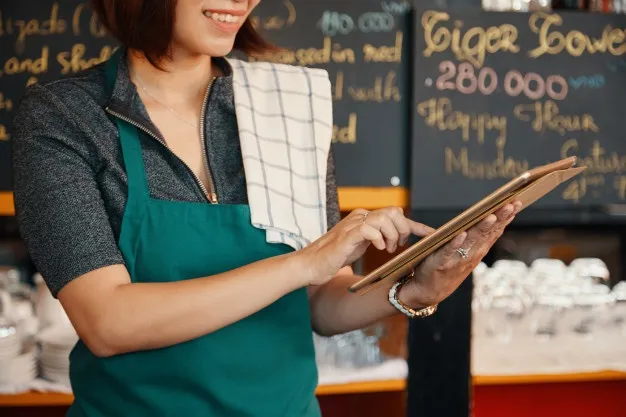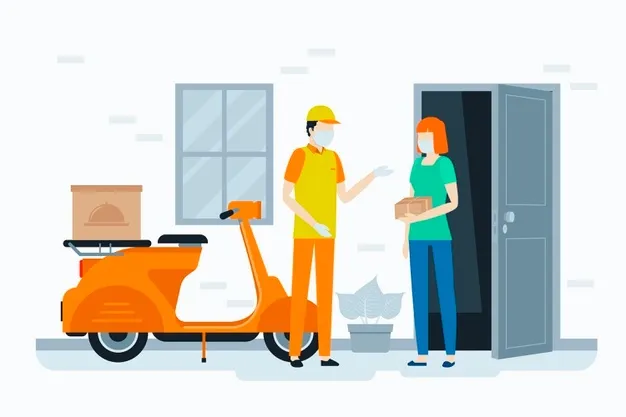

How to Build an On-Demand Delivery App in 2020?
Food is one of the most basic necessities for human life, and the concept of food being delivered home has only bridged the gap between the hassle of dining out and the convenience of not cooking at home.
The relevance of food can be understood in the staggering numbers in revenue that the food delivery segment managed to generate in 2018 - it was a whopping $82 billion. In India alone, the numbers are expected to breach the $3 billion mark by 2020.
A Few Big Names:
The growth of the food delivery apps on demand is a resounding testimony to the fact that any app that addresses the most basic needs of humankind by incorporating new technology is bound to succeed. It brings in an element of choice and flexibility, along with the comfort and convenience of consuming their favorite food in the confines of their homes.
In the United States, the undisputed leader of food delivery on demand UberEats. There are also a few parallel players like GrubHub, DoorDash, and Deliveroo. In India, the market is dominated by Swiggy, Food Panda, and Zomato, which acquired UberEats in India. Although today these companies might be known for humongous profits, they did face their share of challenges before they skyrocketed to the level that they are in today.
Considering the fact that India is quite a populous country and the smartphone penetration in India is slowly increasing, it is a perfect time for aspiring entrepreneurs to set up their food delivery app business on demand by either building an app from scratch or using an UberEats clone.

The Different Business Models:
Often, when we think about food delivery, the first thought that comes to your mind is some random delivery executive getting food from the restaurant and delivering it to our homes. However, under the hood, there is quite some diversity in the business models.
All these business models work to streamline the demand and unify the supply.

The Dedicated Restaurant App:
Some restaurants have a dedicated app that exclusively serves that particular brand and all the branches present around the city. McDonald's could be quoted as a good example of this business model.
The menu is restricted, and the delivery is handled by the restaurant brand itself. This might be a great option for restaurants that have generated a brand for themselves – like Starbucks, Dominos, and McDonald's – but it might not work for restaurants that are still struggling to create a brand name for themselves and operate only from one location in the vast expanse of the city.
It has to be remembered that an app download is a commitment as opposed to visiting a website. Therefore, users might be hesitant to download an app that serves only one restaurant. However, there are chances that a few value additions to your restaurant app can win the trust of the users, so they go ahead and download it.
The Aggregator:
The aggregator model does the job of just collating the information and making it available for customers. The customers can place the order directly with the app. For this app to pick up pretty functioning, the app needs to have features like geofencing, payment gateways, menu, reviews, and of course, the prices.
This app model provides increased exposure to different restaurants that might be pushed into obscurity because of the prevailing competition. However, the responsibility of delivering the food rests entirely upon the restaurant.

Food Delivery with Logistic Support:
This business model is common by a considerable distance, the most popular and the most profitable model. Just like the aggregator model, the app collates and curates all the information including all the information, regarding the food, the menu, the prices, and the cost of delivery.
The greatest advantage, however, is that restaurants do not have to worry about the delivery of the food passes to the users. The delivery is taken care of by the app business itself!
This brings a great advantage for the restaurants because the core job of the restaurant is the preparation of food and not delivering it. If the app provider takes care of the delivery, it provides new employment opportunities for gig workers and also leaves the restaurant having payment responsibilities for delivery executives who might have to stay idle even during the non-peak hours.
The Crucial Features:
Irrespective of the type of app that you use, there are a few features that are deemed crucial when it comes to food delivery. All the features are designed to make the entire process convenient and less time-consuming.
There are different applications for different sets of users, and each application is expected to fulfil its functionalities perfectly that all the apps work in tandem with each other to execute the entire process of food delivery right from ordering until the confirmation of delivery.
As discussed earlier, there are different apps for customers, restaurants, and delivery executives. In addition to all of this, there is an administrator to take care of all the functionalities.

The Customer App:
The customer should be designed in such a way that it helps the customers execute the process of ordering without any hassle.
- The customer should be able to easily register for the services by using simple login mechanisms or by using Google and Facebook.
- There should be a simple process to add food items to their carts and place the order.
- They should be able to make the payments without any difficulties.
- They should be given real-time updates on the acceptance of orders and should also be able to track the movement of the order right from the delivery executive going to the restaurant until the delivery is being executed.
- They should be provided with a feedback mechanism that enables them to rate the delivery experience.
The Delivery Executive App:
The delivery executives form an important and integral part of the food delivery ecosystem and the app should be designed in such a way that they find the entire delivery process to be easy and efficient.
- The delivery executive should be able to register for their job without any difficulty. At the same time, it should not be forgotten that there needs to be a meticulous process for identity verification and authentication.
- The delivery executive should be able to manage their orders with maximum ease. They should be able to accept or reject requests based on their convenience at that moment.
- They should have the feasibility to update the status of the order once it is delivered.
The Restaurant App:
The restaurant forms the final vertex of the food delivery triangle. The restaurant app should enable restaurants to share all the vital information essential for food delivery without much hassle.
- The restaurant should be able to quickly and easily register for their services. They should also be able to furnish extra bits of information like taxation ID and the registration number.
- They should have an administrative panel to share all the information regarding the menu and the prices. They should also be given a panel to input any information about offers and promotions that the restaurant plans to run using the app.
- They should be able to easily manage orders and move them between the different status of the orders being accepted, being prepared, and having been handed over to the delivery executives.
A Few Common things for all the Apps:
There are a few features that can be considered common for all the applications.
- The app should feature a flawless integration with payment and banking systems. For the user, it should be about making payments using multiple payment methods like credit cards, debit cards, internet banking, and wallets. It would also be a good idea to have a native wallet that can come and extremely useful in case of any refunds.
- The delivery executives should be quickly rewarded their remuneration for services. It is to be remembered that the trust factor that you create with your delivery executives plays a major role in more executives signing up with your app.
- The same goes with the restaurant as most of the payment by the users is made online, the restaurant should be able to have their revenue transferred to the bank account after the commission cutdown by the admin.
The GPS and mapping combination plays an important role not only in restaurant and food delivery but also across the landscape of location-based on-demand services.
- The GPS should help users in tracking the location of the parcel and the delivery executive.
- The GPS should also help in directing the delivery executives to the precise location of users, so they do not face any hassle in reaching the location.
The Challenges:
Just because the market is wide and open doesn't mean that there are no challenges in the food industry. There are challenges like identifying your target audience, determining the precise business requirements, designing an impeccable, interactive, and intuitive UI/UX, and a lot more.
Conclusion:
One of the challenges faced by most food delivery companies is the development of an advanced app for their business. You can consider hiring your own development team or tying up with an app development company. Alternatively and profitably, you can consider using white label clones of UberEats. An UberEats-like app will have all the features in place, and we also ensure that the product is free from basic bugs. You will also not need to spend a lot of time and money as the clone script of UberEats is, in essence, a product and not a service.
If you have any requirements for building a food delivery app, you can get in touch with app development companies that specialise in the creation and customisation of UberEats clones. They will take care to gather your requirements and provide you with a perfect and profitable solution.







